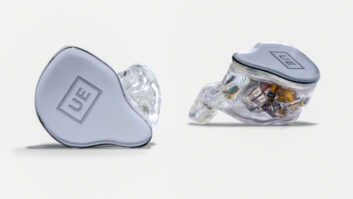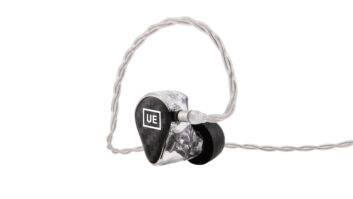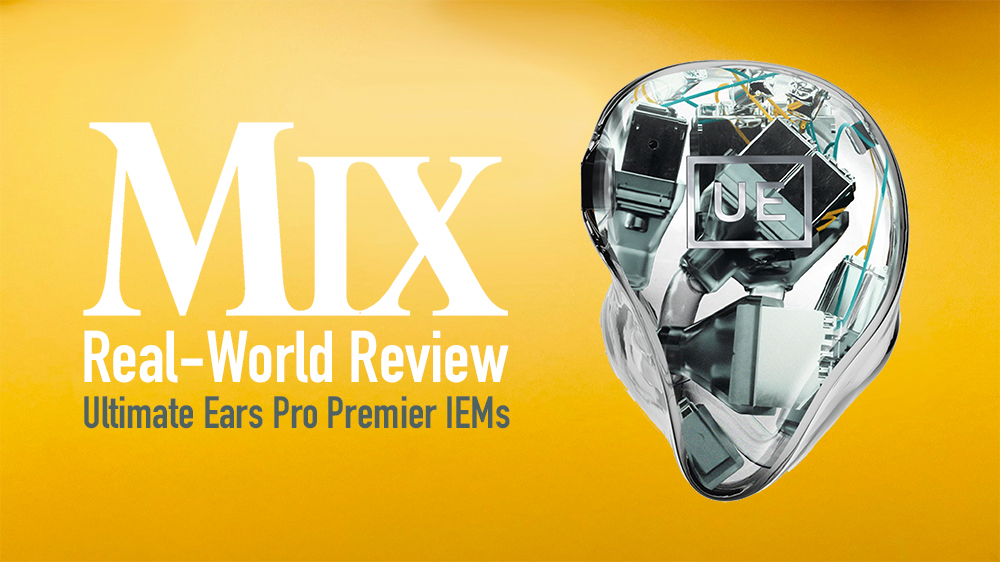
| MIX VERDICT: ULTIMATE EARS PRO UE PREMIER IN-EAR MONITORS |
| THE TAKEAWAY: “If you need IEMs that will take you on an aural deep dive into music, whether for work or pleasure, the UE Premiers will be very hard to beat.” |
| COMPANY: Ultimate Ears Pro • https://pro.ultimateears.com PRICE: $2,999 PROS: • 21 drivers provide ultra-nuanced clarity • Larger size doesn’t affect use • Equally useful for both live and studio use. CONS: • Pricey. • 15-day turnaround may be difficult for some tours. |
Ultimate Ears Pro was one of the pioneering brands in the world of in-ear monitors—I still remember its founder excitedly telling me about the brand-new company he was about to launch when I interviewed him for a story on Van Halen’s 1995 Balance tour. Back then, IEMs were an esoteric, boutique product, looked at by many with both keen interest and a fair amount of wariness; today, they’ve become an accepted, mature part of the pro audio marketplace and have been welcomed into recording settings and audiophile circles as well. With that broad acceptance has come a variety of price points and levels of quality, and that brings us to Ultimate Ears Pro’s new flagship IEM—the UE Premier.
IN THE DRIVERS’ SEAT
Providing listeners with a no-corners-cut listening experience— and carrying a price tag that reflects that approach—UE Premier is Ultimate Ears Pro’s statement on what, indeed, the ultimate in in-ear monitoring might be. The Premier packs an astounding 21 drivers and a five-way crossover into each IEM with the aim of providing as much detail and accuracy as possible, giving all parts of the frequency spectrum equal opportunity to be heard, with a reported range of 5 Hz up to an ultra-high frequency extension of 40 kHz.
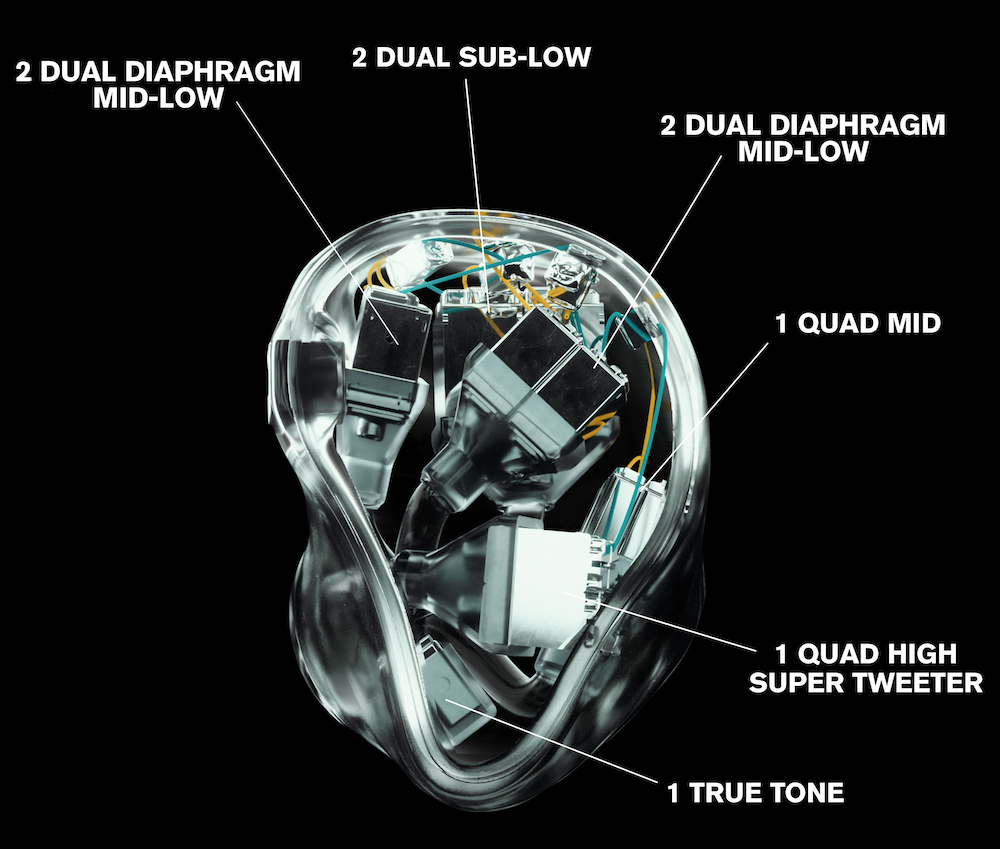
Breaking down those 21 drivers in each ear, there are four Dual Diaphragm Mid-Lows in parallel to two Dual Sub-Lows; a Quad Mid driver providing detail; and Knowles’ patented proprietary Quad High Super Tweeter and UE Pro’s own proprietary True Tone driver—used for upper-register harmonics and overtones— handling the high-end. That’s five different groups of drivers, in turn requiring the five-way passive crossover to accommodate them all.
While people like to joke that the IEM biz has been in an arms race to see who can serve up the most drivers, the presence of 21 in each ear isn’t so that they can blast your eardrum deep into your brain. They’re there to slice up the frequency spectrum more finely; separating the low-mids from mids and mid-highs creates a better opportunity for them all to be heard properly, and spreading the workload among multiple like-ranged drivers makes the process even more granular, reducing the opportunity for distortion. As a result, while the Premiers are designed for use onstage and offer a reported -26 dB of isolation, they may well be best appreciated in a quieter setting, where their ability to convey nuance can really shine.
Still, that’s a lot of hardware to fit in your ear, and while every UE Premier set is custom-made, they all have one thing in common: They are a tad bigger than other UE Pro IEMs. For comparison, the Premiers jut out of my ear perhaps half a centimeter further than my long-serving UE 11s, and while those 11s fit within the concha of the ear (the circular bowl just outside the ear canal), the Premiers cover that and most of the antihelix (the curved ridge that forms the concha). Placed side-by-side, there’s no denying that the Premiers look huge compared to the 11s, but when worn, they don’t look big in the ear; they look like ear monitors. The larger size doesn’t affect their stability either; I’ve found that the Premiers can be worn comfortably for long periods of time and are reasonably unaffected by vigorous testcase bursts of headbanging (i.e., they stay put).
Along with the IEMs themselves, you get a hard case, a 50-inch IPX Earloop clear cable, cleaning tool, polishing cloth, and a booklet with wear and care instructions, advice for responsible listening and warranty information. The Premiers also work with UE Switch faceplates, which allow you to change the look of the outer shell.
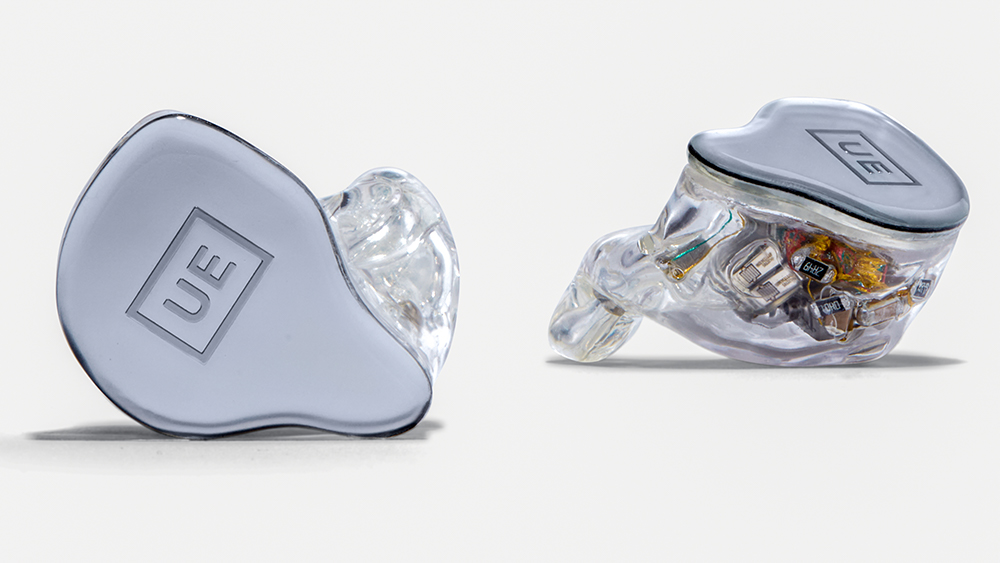
AN EAR FOR DETAIL
So how do they sound? My frame of reference is based around those UE 11s that I’ve had forever; the 11s were first introduced in the latter 2000s, and they remain a robust, popular model that Ultimate Ears Pro still sells today.
Doing an A/B comparison of the Premiers (21 drivers; 5 Hz to 40 kHz) versus the 11s (4 drivers; 5 Hz to 22 kHz) probably wasn’t a fair fight, but it did underline what the Premiers do so well, which is to reveal additional depth and detail, along with more high-end and a greater sense of air. Put another way, the 11s are great for hearing, which is why they’re perfect for the stage, while the Premiers are ideal if you also need to use your IEMs for intensive listening as well.
Warm Audio WA-1B – A Mix Real-World Review
The Premiers handled a variety of genres that I put through them, from broad-soundfield classical to claustrophobic, bass-heavy hip-hop, presenting them all with accuracy and definition, particularly in the low end. On one ambient, modern-rock test track, a kick drum that had welcome, solid hits on the 11s had a notably more defined attack that was the closest I’ve experienced to the real-world thump of a kick in an IEM, due to the sense of space and placement that the Premiers conveyed.
Enveloping synths, ricocheting delays, reverb trails and other atmospheric details in the same track all had greater clarity, helping draw me deeper into the music while aiding my ability to focus on specific sonic attributes.
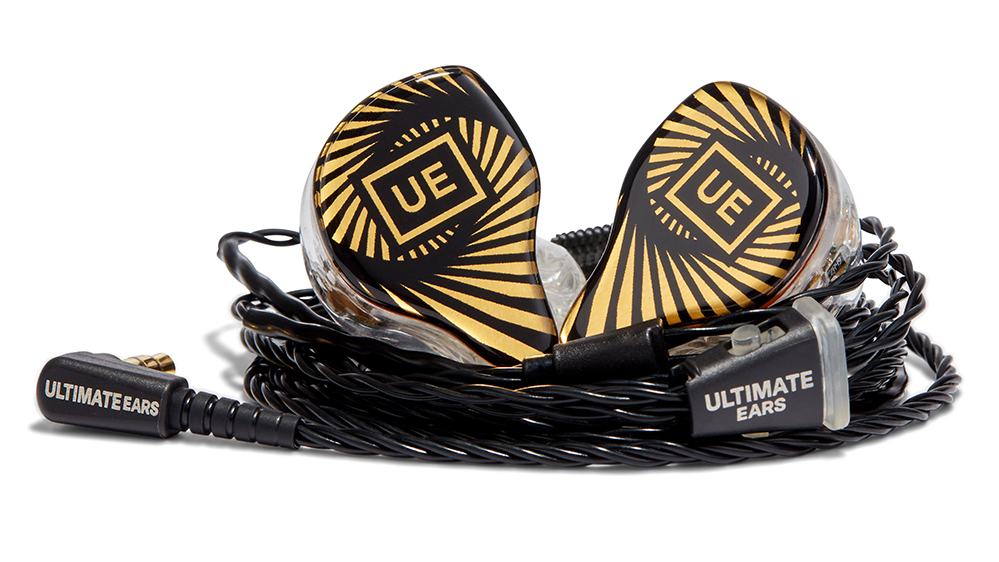
That quality of sound doesn’t come cheap, of course, and a pair of Premiers are not churned out in 20 minutes either. UE Premier IEMs run $2,999, and because they’re custom-made to the shape of your ear, getting personal digital ear scans or ear molds made locally will be an additional cost (in my case, it was about $70 for molds at a nearby audiologist’s office). Once UE Pro gets them, there’s a turnaround time of 15 business days, but this is one of those cases where something is worth the wait—and also, one where you get what you pay for. If you need IEMs that will take you on an aural deep dive into music, whether for work or pleasure, the UE Premiers will be very hard to beat.
